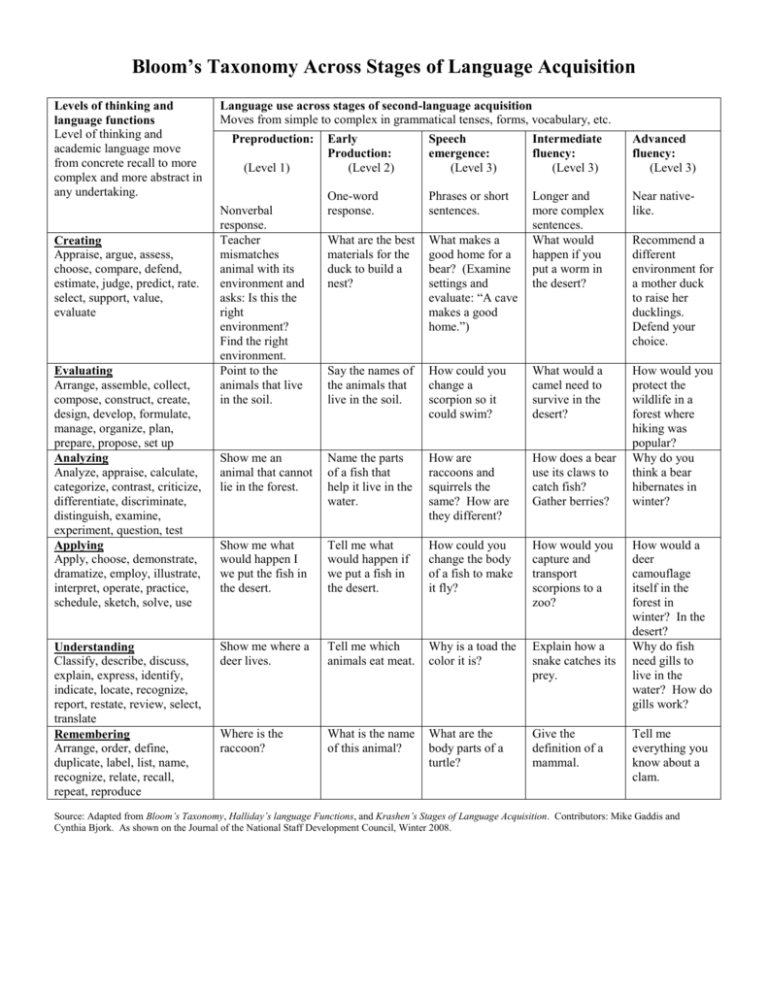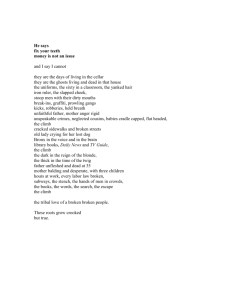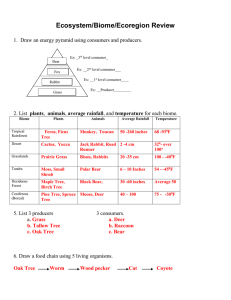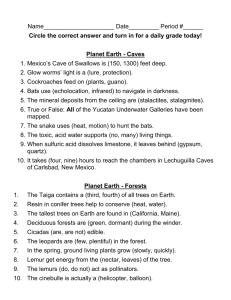Bloom`s Taxonomy Across Stages of Language Acquisition
advertisement

Bloom’s Taxonomy Across Stages of Language Acquisition Levels of thinking and language functions Level of thinking and academic language move from concrete recall to more complex and more abstract in any undertaking. Creating Appraise, argue, assess, choose, compare, defend, estimate, judge, predict, rate. select, support, value, evaluate Evaluating Arrange, assemble, collect, compose, construct, create, design, develop, formulate, manage, organize, plan, prepare, propose, set up Analyzing Analyze, appraise, calculate, categorize, contrast, criticize, differentiate, discriminate, distinguish, examine, experiment, question, test Applying Apply, choose, demonstrate, dramatize, employ, illustrate, interpret, operate, practice, schedule, sketch, solve, use Understanding Classify, describe, discuss, explain, express, identify, indicate, locate, recognize, report, restate, review, select, translate Remembering Arrange, order, define, duplicate, label, list, name, recognize, relate, recall, repeat, reproduce Language use across stages of second-language acquisition Moves from simple to complex in grammatical tenses, forms, vocabulary, etc. Preproduction: Early Production: (Level 2) Speech emergence: (Level 3) Intermediate fluency: (Level 3) Advanced fluency: (Level 3) One-word response. Phrases or short sentences. Near nativelike. What are the best materials for the duck to build a nest? What makes a good home for a bear? (Examine settings and evaluate: “A cave makes a good home.”) Longer and more complex sentences. What would happen if you put a worm in the desert? Say the names of the animals that live in the soil. How could you change a scorpion so it could swim? What would a camel need to survive in the desert? Show me an animal that cannot lie in the forest. Name the parts of a fish that help it live in the water. How are raccoons and squirrels the same? How are they different? How does a bear use its claws to catch fish? Gather berries? How would you protect the wildlife in a forest where hiking was popular? Why do you think a bear hibernates in winter? Show me what would happen I we put the fish in the desert. Tell me what would happen if we put a fish in the desert. How could you change the body of a fish to make it fly? How would you capture and transport scorpions to a zoo? Show me where a deer lives. Tell me which animals eat meat. Why is a toad the color it is? Explain how a snake catches its prey. Where is the raccoon? What is the name of this animal? What are the body parts of a turtle? Give the definition of a mammal. (Level 1) Nonverbal response. Teacher mismatches animal with its environment and asks: Is this the right environment? Find the right environment. Point to the animals that live in the soil. Recommend a different environment for a mother duck to raise her ducklings. Defend your choice. How would a deer camouflage itself in the forest in winter? In the desert? Why do fish need gills to live in the water? How do gills work? Tell me everything you know about a clam. Source: Adapted from Bloom’s Taxonomy, Halliday’s language Functions, and Krashen’s Stages of Language Acquisition. Contributors: Mike Gaddis and Cynthia Bjork. As shown on the Journal of the National Staff Development Council, Winter 2008.











